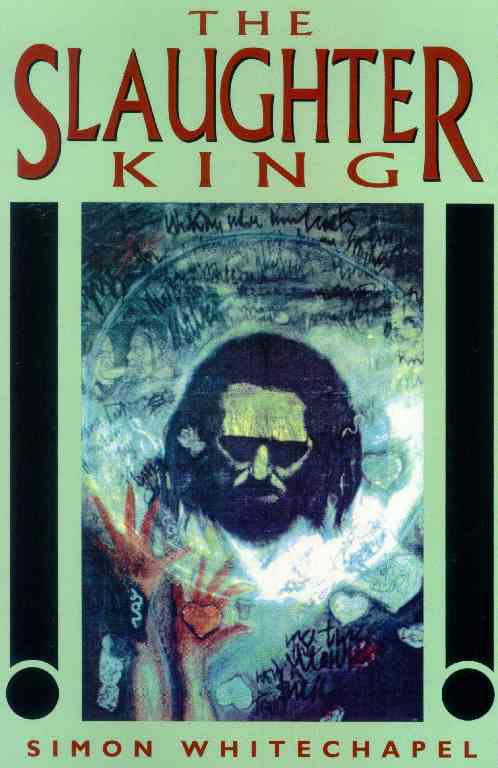 A deathwalker prowls the night paths, killing and disappearing like a nightmare with sharp teeth. The Slaughter King is a murderer in the legal sense, but that word seems wrong. “Murder” means the killing of man by man. The Slaughter King does not seem to be human, and after he’s finished with his victims, neither do they.
A deathwalker prowls the night paths, killing and disappearing like a nightmare with sharp teeth. The Slaughter King is a murderer in the legal sense, but that word seems wrong. “Murder” means the killing of man by man. The Slaughter King does not seem to be human, and after he’s finished with his victims, neither do they.
A London policewoman is following The King’s body trail. Unless progress is made soon, the Met will remove her from the case. The killer seems to have links to the Neopagan community, radical feminists, and even the industrial music subculture. Alannis Kirk hopes she can weave these threads into a rope strong enough to hang him. Along the way, she falls in love with a young woman called Sansiega, who possesses insider knowledge on The King. Or, she seems to fall in love. A big part of the book is Alannis’s own motivations, and – when down on the wire – how much better she is than the man she’s stalking.
This is Simon Whitechapel’s first book, and his only attempt at writing a novel (to my knowledge). One one hand it is an archetypal small press novel, featuring unfettered chaos and misanthropy etc, but on the other hand it might be the most “normal” book by this author. There’s not really any of the existential surreality that The Eyes hints at and Gweel declaims like a manifesto. Although nobody would mistake this for a mainstream thriller, your brain can definitely make sense of The Slaughter King.
The story isn’t such of a much. Its twists and turns are illogical and the ending isn’t very satisfying. What The Slaughter King successfully doubles down on is its dark and compelling atmosphere. It’s violent, but more than that, there’s a real sense of inbound doom. The King is bad, but as revelations come to light about his true motivations, he seems like more like a pawn of a corrupt and rotting institution. Ben H Winters wrote a book called The Last Policeman, about a policeman trying to solve a murder when he knows the apocalypse will come in six months. That sums up The Slaughter King to me. Whether The King escapes or goes free doesn’t seem to matter, as the world trying to catch him is fragile and ridiculous — a card tower made of 52 jokers — and destined for imminent collapse.
The book is grisly in that superdescriptive way that makes you feel like you’re reading a medical textbook. The first blow was carefully calculated to maim but not kill, to be massively painful, but not so massive as to pass shortly into numbness: a slash delivered through the flesh of the upper right thigh, ploughing apart the dermis and epidermis, the waxy yellow subcutaneous fat and the deep fascia as it sliced through the rich red fibre bundles of the superficial muscles, the tensor fasciae latae, the rectus femoris, the iliacus, the psoas major, the pectineus and adductus longus, the gracilis, cutting the wet tubery of the veins and arteries, the descending lateral circumflex, the oxygen balas’d arteria profunda fermoris, the vena saphena longa, almost grazing the femoral surface at its deepest point. The Slaughter King has lots of lesbian sex, too. These sequences are lavishly described and endlessly creative, but there are a great many of them and they seem of small thrust to the plot. After the second or third I found myself speed-reading through them.
The Slaughter King is a flawed but definitely interesting book. If there were Simon Whitechapel trees on every streetcorner with copies of The Slaughter King hanging off every branch, I’d have no trouble recommending it, but finding an out of print book from twenty years ago might not be worth the trouble for some people.
No Comments »
Comments are moderated and may take up to 24 hours to appear.
No comments yet.
